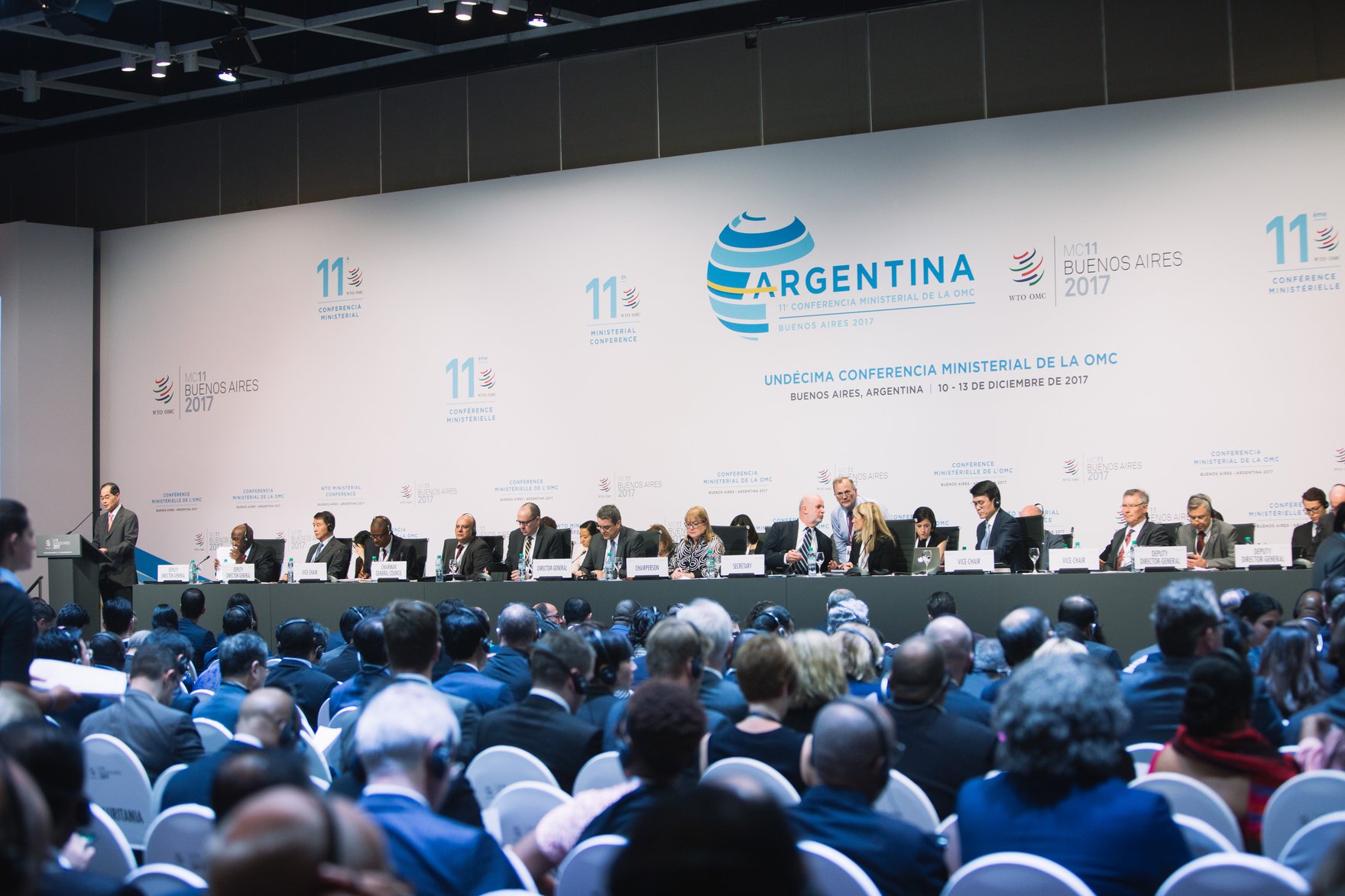On March 8, 2018 — International Women’s Day — the World Trade Organization (WTO) held an event on “Delivering Opportunities for Women,” which addressed, among other topics, “women’s empowerment at work in the WTO.”
Since its creation in 1995, the WTO has become increasingly aware of the need to work toward gender parity within its own organization. Women make up less than 28 percent of professional staff at the WTO and are underrepresented in senior management positions. In 2017, there were 27 director-level (or above) positions at the WTO Secretariat, of which only four were filled by women. The data shows that men apply more often than women for professional vacancies at the WTO.
According to Christian Dahoui, director, Human Resources Division at the WTO, only 23.7 percent of applications for the three WTO director positions in 2017 were from women. An article published in the Harvard Business Review states that “men apply for a job when they meet only 60% of the qualifications, but women apply only if they meet 100% of them.” It is interesting that, in the end, the number of appointments for professional positions is relatively equally divided between men and women, even though there is a discrepancy in the applications received from the two groups.
The participation level of women in WTO dispute settlement is still quite low. There are usually three panellists on a panel. As of March 31, 2018, (not including ongoing panels), there have been 663 panellists, of which 103 were women and 560 were men. Since the creation of the Appellate Body, there have been 25 members (adjudicators), of which five were women.
The level of participation of women in WTO councils, committees and other bodies is also quite low:
- The General Council is the WTO’s highest-level decision-making body. From 1995 to 2018, there have been 24 ambassadors (occasionally there is more than one chair per year) that have served as the chair of the General Council — only two were women.
- The Dispute Settlement Body (DSB) has also had 24 chairs — only three were women.
- The Council for Trade in Goods (CTG) oversees the implementation of the 14 multilateral agreements on trade in goods. There have been 27 chairs of the CTG — only two were women.
- The Council for Trade in Services (CTS) oversees the implementation of the General Agreement on Trade in Services. There have been 26 chairs of the CTS — only four were women.
- The implementation of the Agreement on Trade-Related Aspects of Intellectual Property Rights (TRIPS) is overseen by the Council for TRIPS. There have been 26 chairs — only four were women.
- The chairs of the subsidiary bodies of the CTG and the CTS, as well as the chairs of other committees, working groups, special sessions and negotiating groups, have been predominantly men.
- To date, the chairs of the Trade Negotiations Committee, the Special Session of the Committee on Agriculture, the Sub-committee on Cotton, the Negotiation Group on Market Access, the Negotiating Group on Rules, the Negotiating Group on Trade Facilitation, the Special Session of the DSB, and the Working Group on Trade, Debt and Finance have all been men.
That said, the WTO is taking further steps to advance the consideration of gender in various trade fora.
- In June 2017, the WTO nominated its first trade and gender focal point, Anoush Der Boghossian, to coordinate efforts related to gender and trade among divisions and explore possibilities for future initiatives in this area.
- The WTO’s technical assistance plan for 2018–2019 includes a mandate for the WTO to develop a training module on trade and gender. The objective of the module is to focus “on trade policy with the aim to raise awareness and enhance the aptitude of policy makers to incorporate gender considerations in their analysis and trade policy development or negotiations.”
- The WTO is also partnering with the World Bank to generate new data about the link between gender and trade, with the intention of releasing a detailed report at the next Aid for Trade Global Review in 2019.
In addition to these steps, the WTO organizes the Public Forum. This is the WTO’s largest annual outreach event, which provides a platform for participants to discuss the latest developments in world trade and to propose ways of enhancing the multilateral trading system. I was the president of Geneva Women in International Trade (GWIT) in 2003. That year, GWIT, with the support of the Government of Canada and the Women Ambassadors in Geneva, sponsored the first formal session on gender and trade at the Public Forum. WTO Director-General Supachai Panitchpakdi made opening remarks at the session, which addressed issues such as how women are affected by, and contribute to, world trade.
The session was intended to shift the WTO’s attention toward the significant contributions women make in international trade, as well as to highlight the impact of trade liberalization on women. Practical steps that were suggested at the GWIT session included the consideration of a gender component during the WTO’s trade policy review process, the development of an active policy that considers female applicants in WTO hiring decisions and the integration of gender concerns in training courses offered by the WTO.
Fifteen years after this groundbreaking session on gender and trade, the WTO is undertaking some steps to enhance the participation of women in the WTO.
